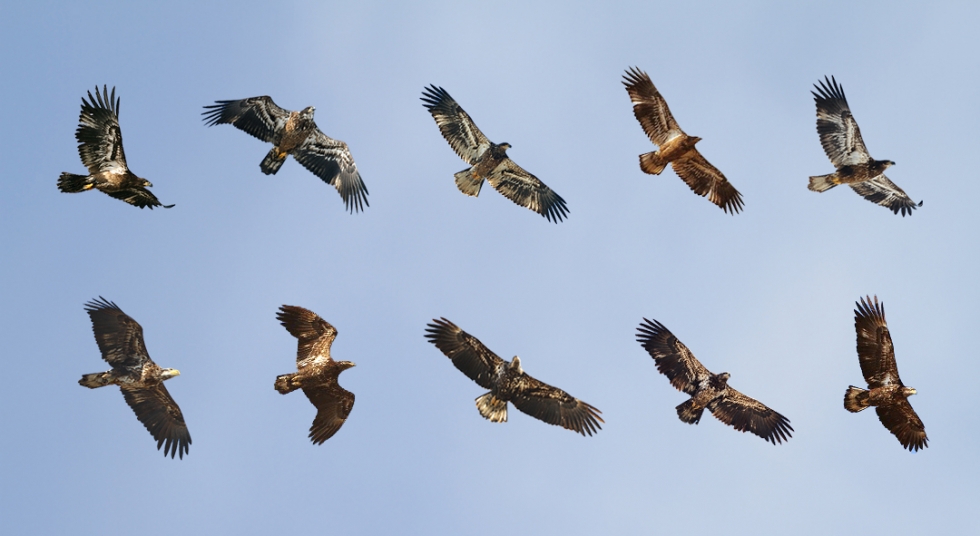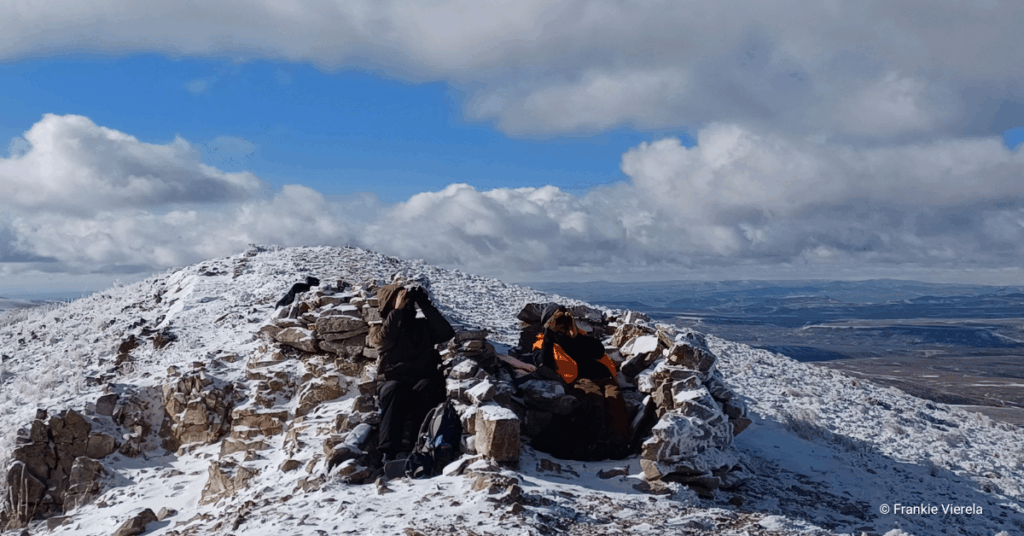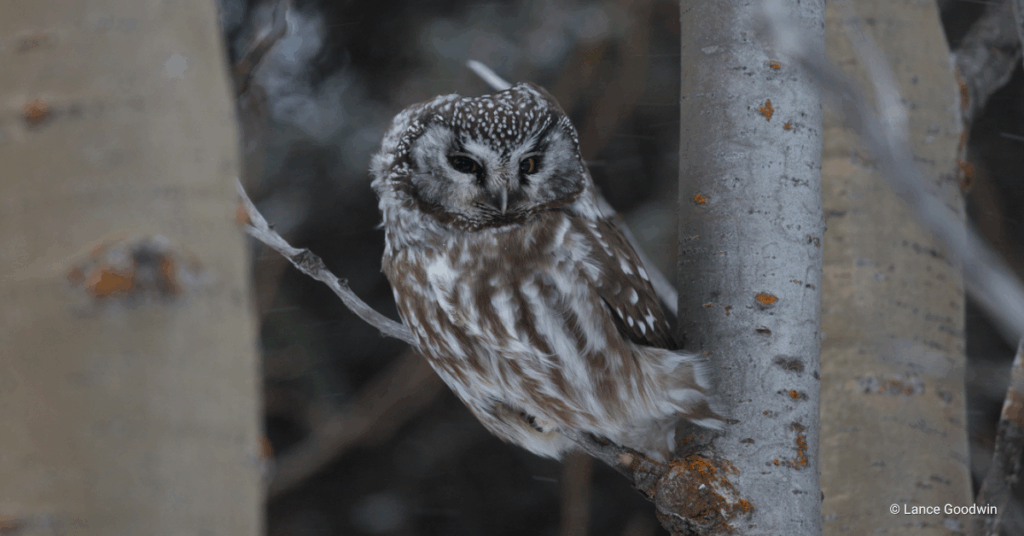Let me share a trick with you I figured out in the late 80’s – early 90’s, and still use when I am out watching hawks. On distant dark-bellied Bald Eagles, meaning juveniles or sub-adults (sub-adults have white bellies or dark bellies depending on age, molt, and variation), look for the pale area on the tips of the inner primaries to help age them. Check out this composite of juveniles (top row) and sub-adults (bottom row “click” to enlarge); the two ages look very similar to each other. However, juveniles have pale-tipped inner primaries that appear as a gap or missing feather in the wing (I call “check marks”). The sub-adults have a black border at the tips, which constricts the paleness from appearing like a missing feather. So, when juveniles molt in their first spring/summer, they will lose the inner primaries and gain sub-adult feathers that have a border. This works nearly 100% of the time. But beware that the extent of the pale markings is variable between individuals, and make sure you can judge this well before using it with the ultimate confidence in the field. Besides this, there are other ways to tell juveniles from older Bald Eagles, and they are clearly represented in field guides, but this trick is helpful on high-flying or distant birds where other field marks or molt may be difficult to see.

This post was written by Jerry Liguori. You can read more about Jerry and his legacy at HawkWatch International here.



